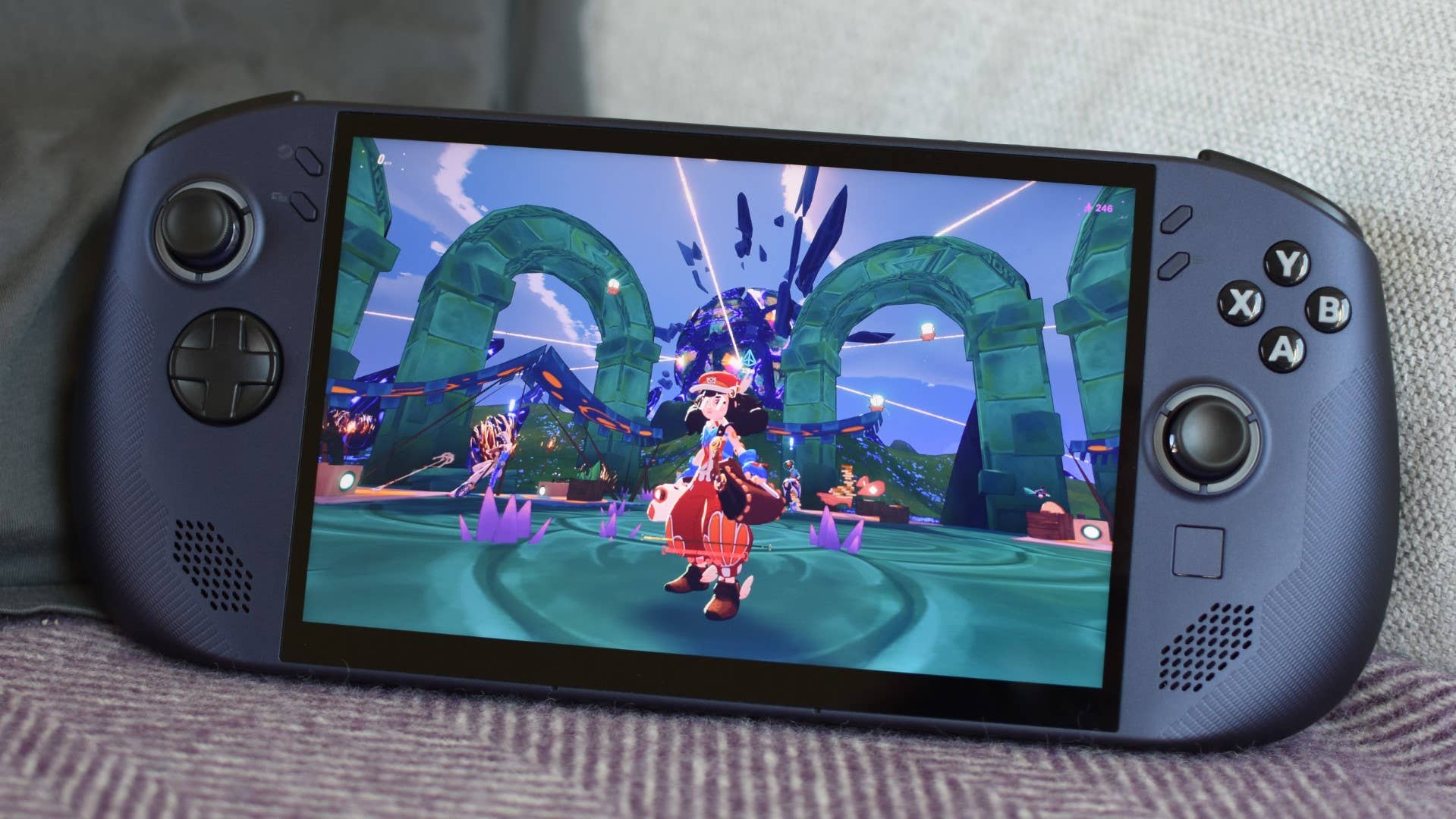When even Microsoft themselves start promising a version of Windows 11 that can launch with half its functions turned off, it’s time to accept that such a heaving desktop OS is an uncomfortable fit for handheld gaming PCs. Lenovo already have, launching a new version of their Legion Go S that swaps Windows 11 for the more naturally portable-minded, as-seen-on-Steam-Deck SteamOS, and instantly becomes a better handheld for it.
Better doesn’t mean excellent – the Steam Deck OLED is quieter, longer-lasting, and generally easier to handle. But between its wiser choice of operating system and relatively affordable pricing, the Legion Go S SteamOS is at least a refreshing change from the succession of fiddly, expensive devices that seemingly every non-Valve manufacturer has been siccing on each other. If this is a sign of a sea change, by all means, ring my knell.
Purely hardware wise, this is simultaneously an upgrade, paring-back, and continuation of 2023’s original Legion Go. Gone are the detachable controllers, with the mouse capability that I’m like 75% Nintendo nicked for the Switch 2, and the IPS display has shrunk from 8.8in to a round 8in, dropping the resolution from 2560×1440 to 1920×1200. Though that’s the kind of spec reduction one can get on board with, as the Legion Go’s sheer density of pixels was too much for its AMD Ryzen Z1 Extreme to handle in all but the simplest of games.
The Legion Go S’ 1200p screen is a much better match, especially as this SteamOS version offers a choice of the Z1 Extreme or the cheaper Ryzen Z2 Go, the latter of which is powering my test unit. Despite “Bigger number = more gooder” convention, the Z2 Go uses an older Zen core architecture (as well as a lower 4/8 core/thread count and slower clock speeds), though it’s ostensibly more power-efficient as well.

We’ll see about that, but I will say that for as much the Legion Go S gives up from the original, it does sit more pleasantly in the hands. It’s rounder, softer, lighter – less conceptually ambitious, perhaps, but nicer to grip as an actual handheld. That 8in screen is still big enough to give it some distinction from the Asus ROG Ally Xs and Zotac Zones out there, and you still get some premium flourishes, like the responsive Hall Effect joysticks and adjustable trigger depth.
For delivering a usability boost, though, nothing tops the addition of SteamOS. Windows 11 can accurately claim a wider selection of compatible games and launchers, but even getting them set up on this cramped desktop OS with joystick and touchscreen controls can feel like untangling Christmas lights while being trapped inside a car boot. The handheld-optimised SteamOS interface is positively flowing by comparison, to say nothing or its greater moment-to-moment reliability and more keenly games-focused feature set. Which, by the way, grants the Legion Go S some of the Steam Deck’s best tricks, from a fully working Quick Resume to per-game custom power profiles. Desktop Mode is here too, unlocking SteamOS’ ability to add non-Steam launchers that stretch its compatibility to almost anything short of your Game Pass picks. And you can stream those anyway.
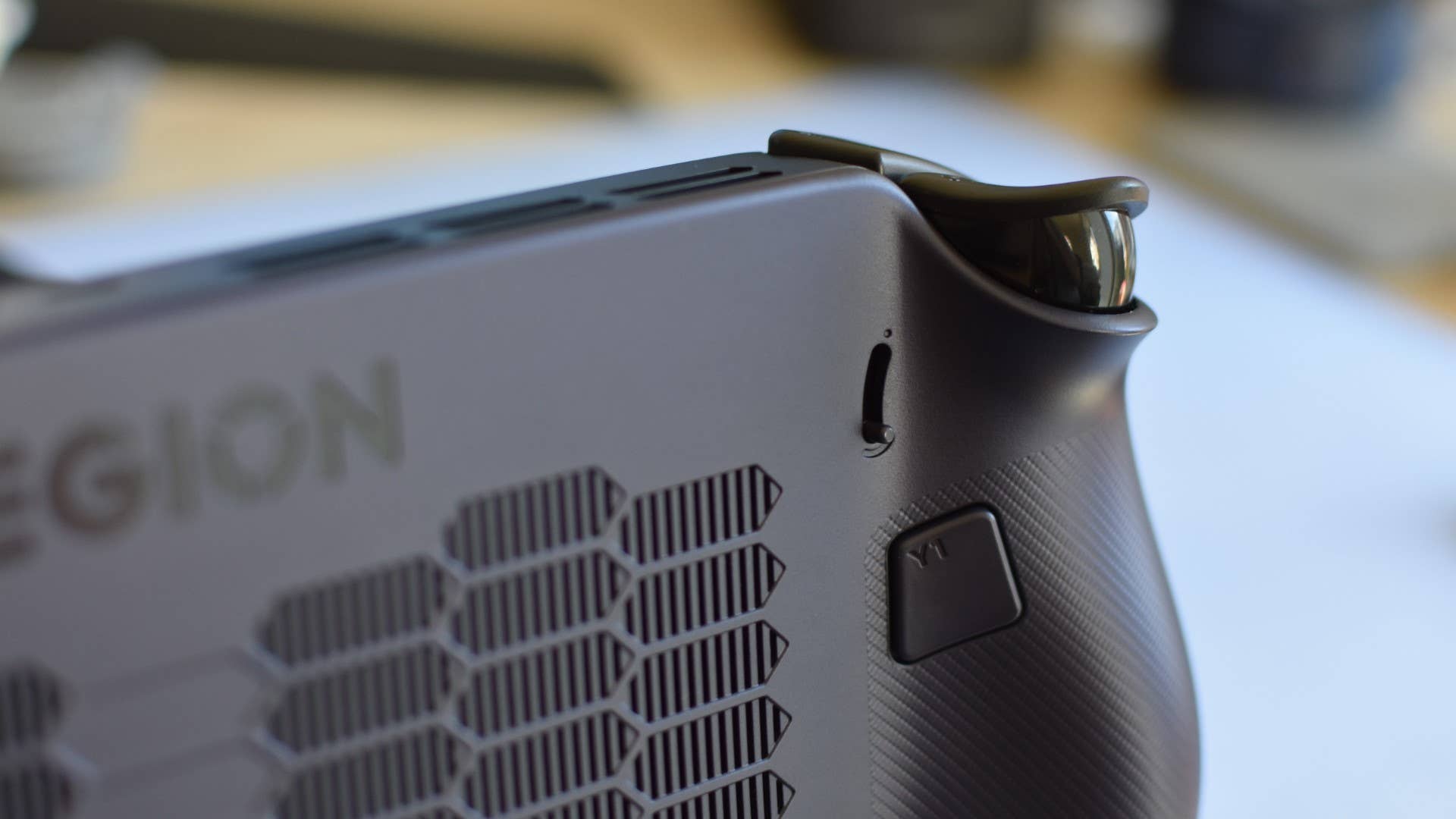
I’m wary of carelessly suggesting that SteamOS is the only way forward for handheld PCs; it might be a safe place where Copilot can’t hurt you right now, but a monopoly could be as pernicious for Valve as it has been for Microsoft. Still, of the Legion Go S’ two available flavours, SteamOS is much freer of friction – and depending on the game, it may even run faster too.
Yes, Ars scooped everyone on this, but my own testing also points towards games performing better on SteamOS than on Windows 11; a comparison that’s been difficult to fairly make using previous handhelds, as the Legion Go S is the very first to enjoy full driver support on both operating systems. Here’s what my Z2 Go-powered Legion Go S managed across a gaggle of ten game benchmarks, all running at native 1920×1200:

For the record, a good half of these don’t show a tangible difference between SteamOS and Windows performance, so it’s too simplistic to claim that one is simply faster than the other. But noticeable framerate differences do occur, and every single time, it’s in the favour of SteamOS. Especially that Forza Horizon 5 result, bloody hell. I was sure I’d fumbled a setting or something to get such a high average on SteamOS, but it kept pulling identical or similar scores after multiple checks, re-runs, and reboots. I think it really is just that much quicker, at least on this specific handheld. Were I blessed with infinite time (and a stronger tolerance for entering our Steam press account’s miserably overlong password), I’d run many more of these tests, though I believe even a sample size like this is enough to draw some conclusions. Conclusions like “Don’t buy the Windows version of the Legion Go S.”
As for how it performs against handhelds which aren’t itself, the choice of a lower-powered Z2 Go chip doesn’t initially appear to be a poor one. Next to rival devices running at their respective native rezzes, it has that remarkable Forza result still going for it, and equals fellow 1200p-er the MSI Claw 8 AI+ in Shadow of the Tomb Raider. The Claw does batter it senseless in Cyberpunk 2077, but then you’d expect as much when MSI’s handheld costs nearly twice as much.

With resolutions semi-standardised to either 1280×800 or 1280×720, the Z2 Go doesn’t look quite as peppy, though it does repeatedly outpace the original Legion Go – which suggests the older model isn’t taking full advantage of its Z1 Extreme chip. It also easily beats the Steam Deck, the Legion Go S’ only real competition in the sub-£600 weight class, in all four of these games.
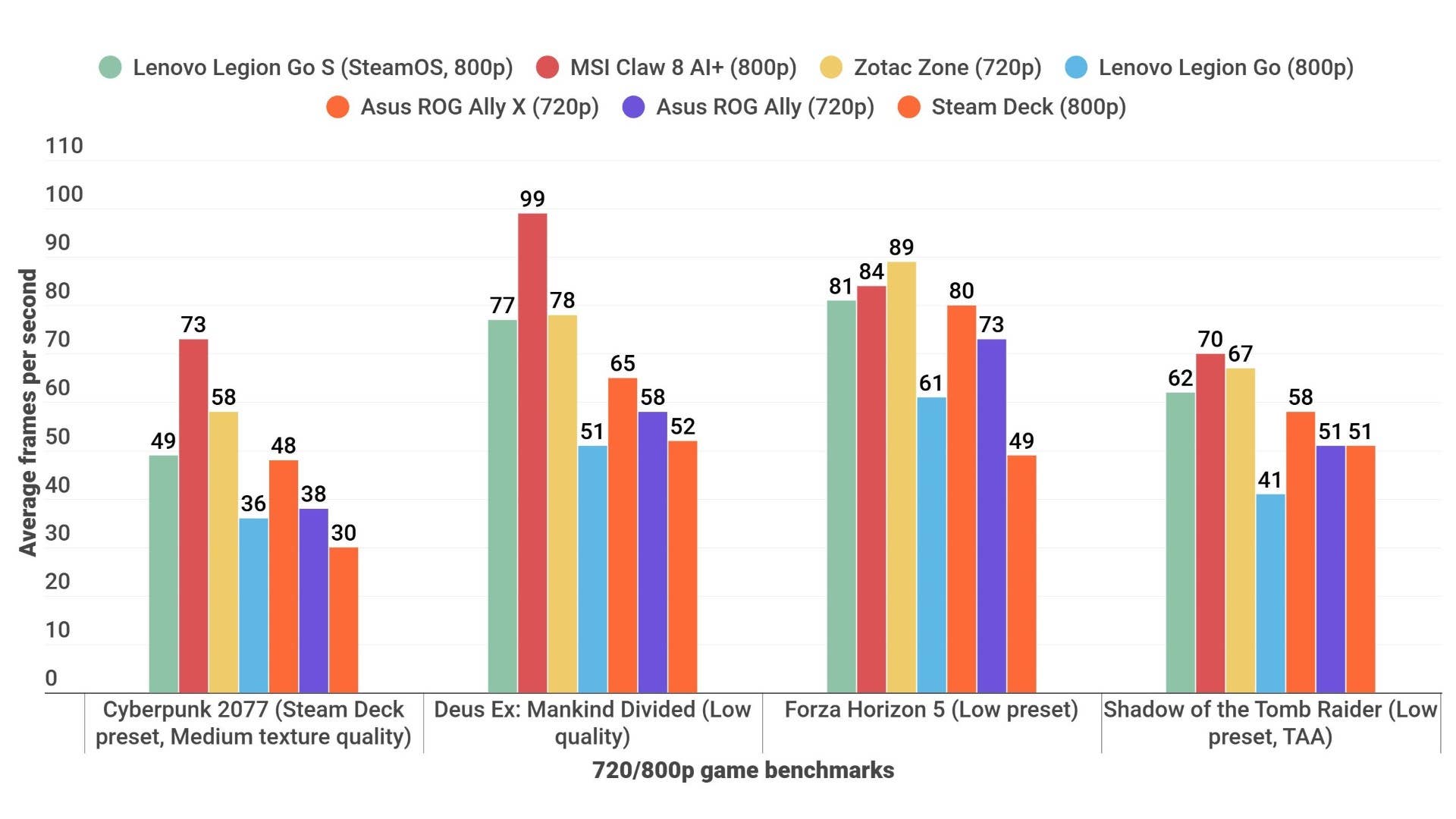
That would appear a major victory, given Lenovo’s handheld also offers a sharper display. However, further investigation revealed the Z2 Go’s performance to be more inconsistent than indefatigable. Take Elden Ring: in theory this should perform nicely, considering that the Steam Deck can easily do 30fps on a mix of Low and Medium settings at 800p. At the Legion’s native 1200p, though, it struggled to even stay above 20fps. Dropping to 1280×800 raised framerates to the point of playability, roughly, but it still wasn’t noticeably faster than the Steam Deck, and 800p on that taller, wider screen made everything look unhappily fuzzy.
Despite higher scores elsewhere, the Legion Go S also often struggles with the same games that the Steam Deck does. Oblivion Remastered is only capable of hitting 30fps-plus on the Legion when it’s set to use its ugliest Low Global Illumination setting, plus FSR upscaling on Performance mode. In Horizon Forbidden West, meanwhile,it dead-on matches the Deck in dropping to the low twenties in the toughest areas, despite stooping to the Ultra Low preset and FSR on Ultra Performance. And Dune: Awakening regularly dips below 30fps on minimum settings and Ultra Performance FSR, even with its fidelity-killing Low End Laptop mode engaged.
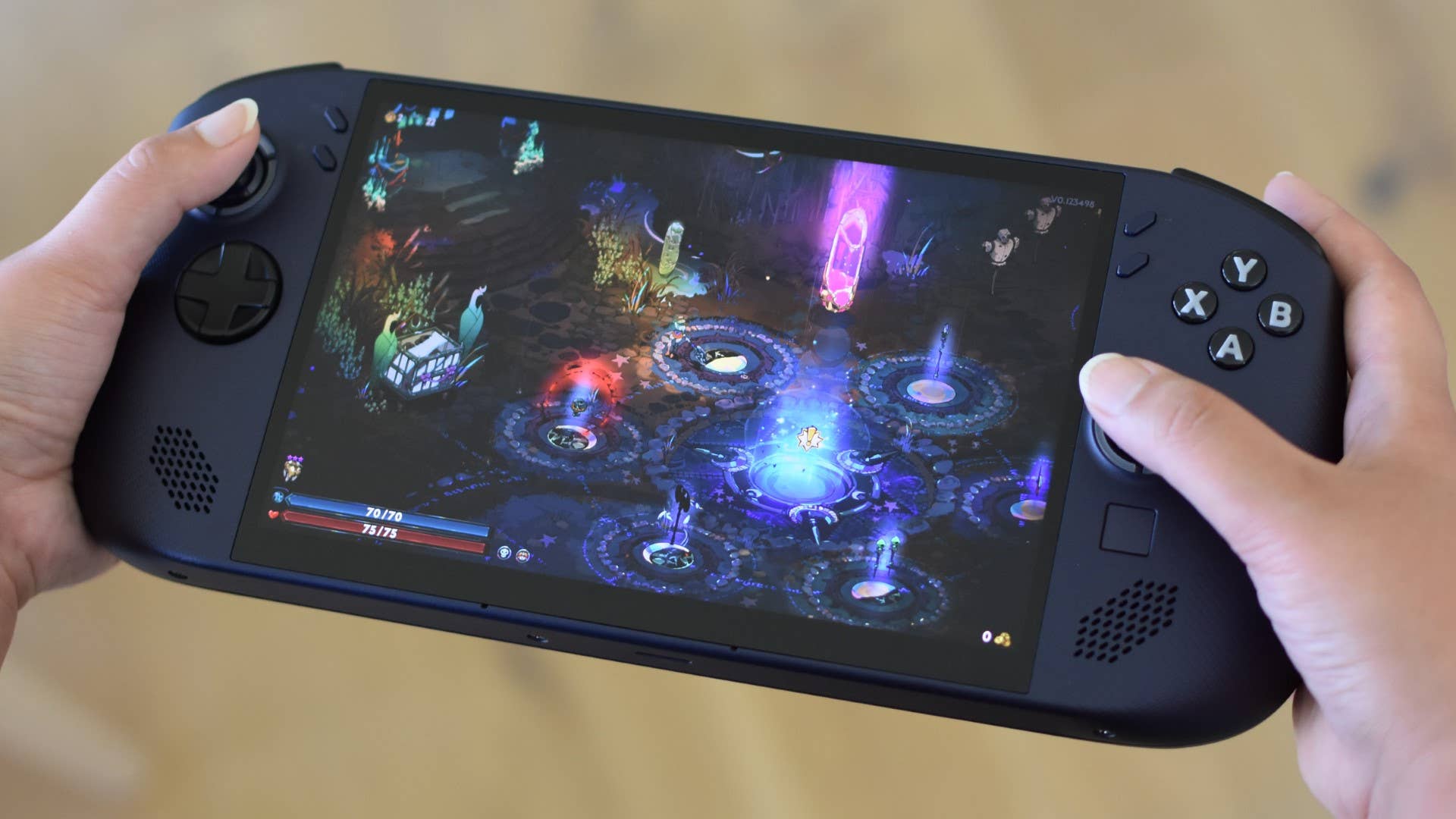
The Legion Go S does have more pixels to fuel, but as with the 1440p Legion Go of yesteryear, it sucks to pay for a crisper resolution only to have to manually lower it in pursuit of acceptable games performance. Possibly the most egregious example of this occasional lack of power – again, despite high speeds in other games – was that FBC: Firebreak’s Handheld preset wouldn’t produce a reliable 30fps at native 1200p, even with the addition of yet more Ultra Performance upscaling. It’s literally called “Handheld”! For handhelds! And this is a brand new one!
It’s much happier running light stuff like Hades II, Haste, and Rematch (the latter doing a tidy 60fps on Low), but then so is the cheaper-still Steam Deck. As is the Steam Deck OLED, the upgraded screen of which also happens to beat the Legion Go S display in non-resolution metrics. The Deck OLED can, for instance, blast out HDR games at a brightness of up to 984cd/m2, burning the eyebrows off the Legion Go S and its middlingly luminous 486cd/m2 panel. Contrast is no contest either, as although I measured a respectable 1495:1 ratio on the Legion Go S, the Deck OLED can produce technically infinite contrast by switching off black-showing pixels entirely.
The Legion Go S can display a wider array of colours than the Steam Deck OLED, covering 99.2% (versus 93.8%) of the sRGB colour gamut, but in practice the latter’s brightness and contrast advantage just make it more vibrant, with better visibility in dark scenes. Valve opting for an anti-glare finish helps there too – the Legion Go S screen is glossy and reflective.
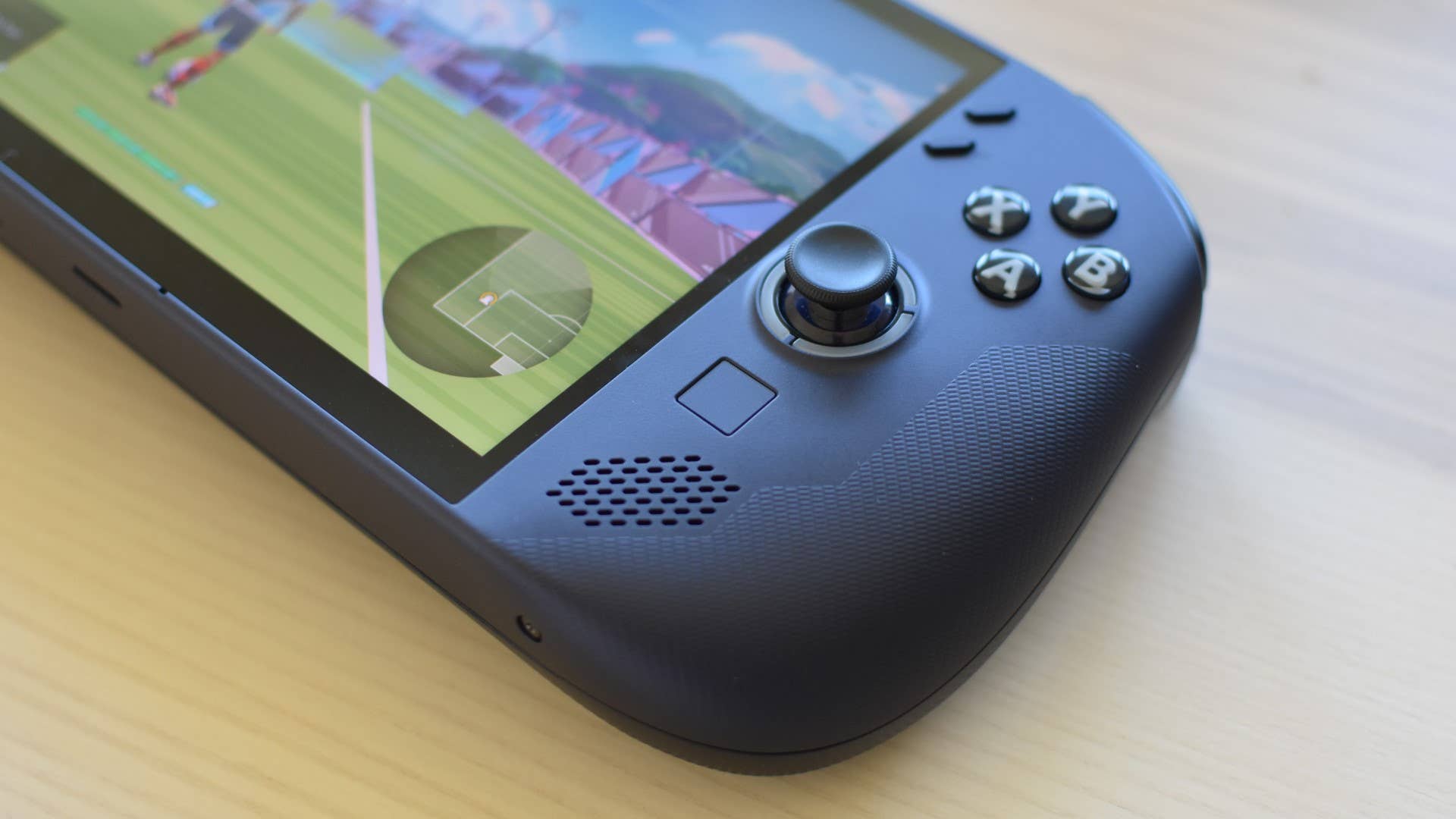
It’s these quality-of-life bonuses that have kept both Steam Deck variants resonating for years, and while the Legion Go S does have some nice hardware, I’m not convinced it shares that attention to detail with its SteamOS frenemies. The trackpad is a good example: it’s better than having no trackpad at all, but unlike the Deck’s dual pads, it’s too small to use as a thumbstick alternative in games, and I’ve seen it produce some seriously finnickly cursor movement in both Desktop Mode and games like Total War: Warhammer III. If you did end up buying this, you’d fancy adding a mouse and a docking station with only slightly less urgency than if you’d gone for a padless ROG Ally.
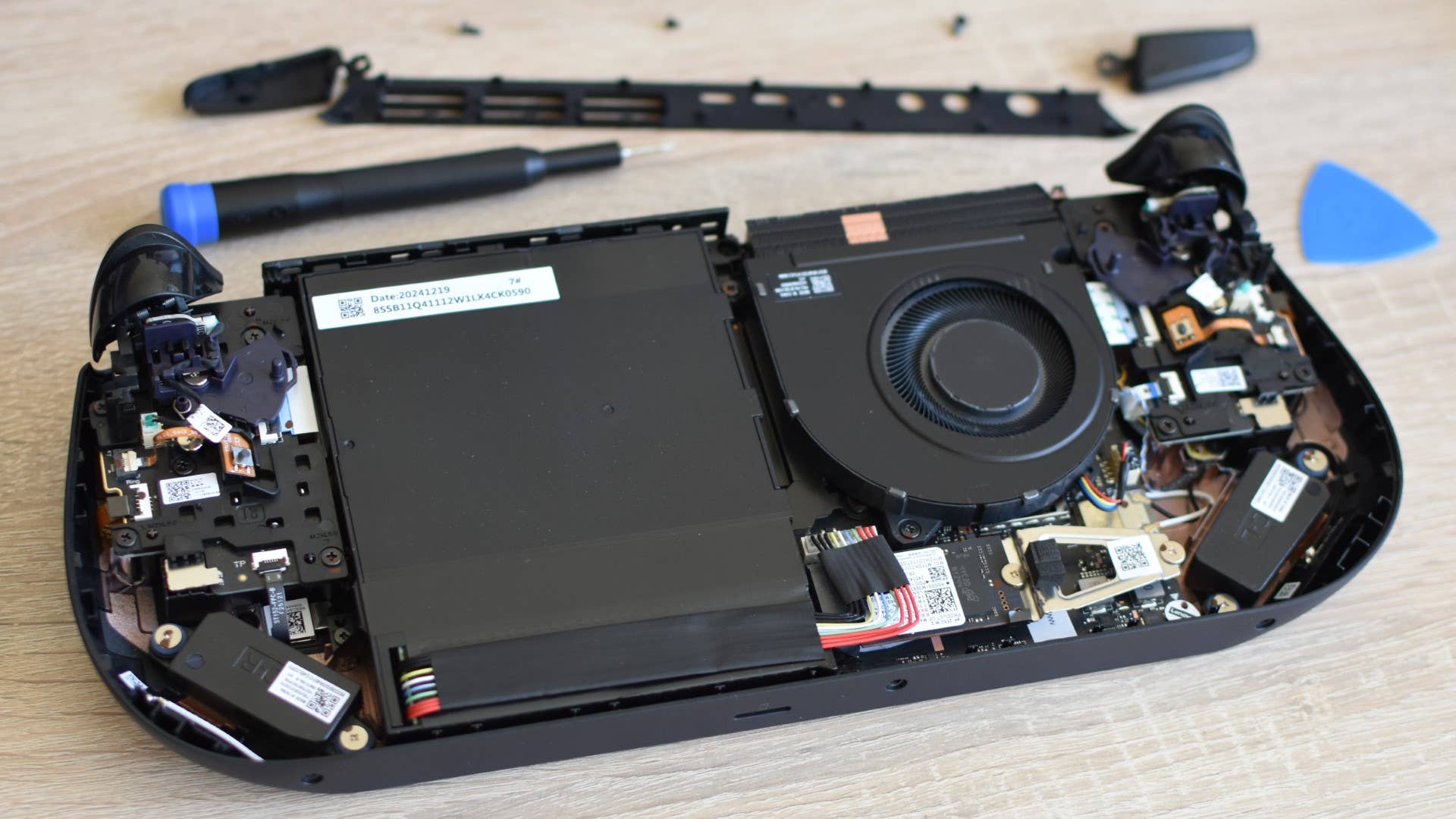
Even more offputting is the fan noise, which is loud enough that the Legion Go S’ own speakers can’t entirely drown it out. And to simply make that effort in the first place, you’d need to be playing a game, but the cooling system loves to do its best jet engine impression upon such innocuous tasks as downloading a software update. The chassis stays cool, to be sure, but I’d be lying if extended sessions with this didn’t make me miss the gentle whispering of my Steam Deck OLED.
Well, I say extended, but another big Legion Go S weakness is its battery life. Its least worst result, 1h 28m in Elden Ring – and that’s with both screen brightness and speaker volume at 50% – is only a few minutes shy of the original, LCD Steam Deck, but its 1h 49m in Portal 2 shows that even with SteamOS, the hardware is nowhere near the same level on stretching out power reserves in low-demand games. Its 1h 24m in Forza Horizon 5 was underwhelming, too.
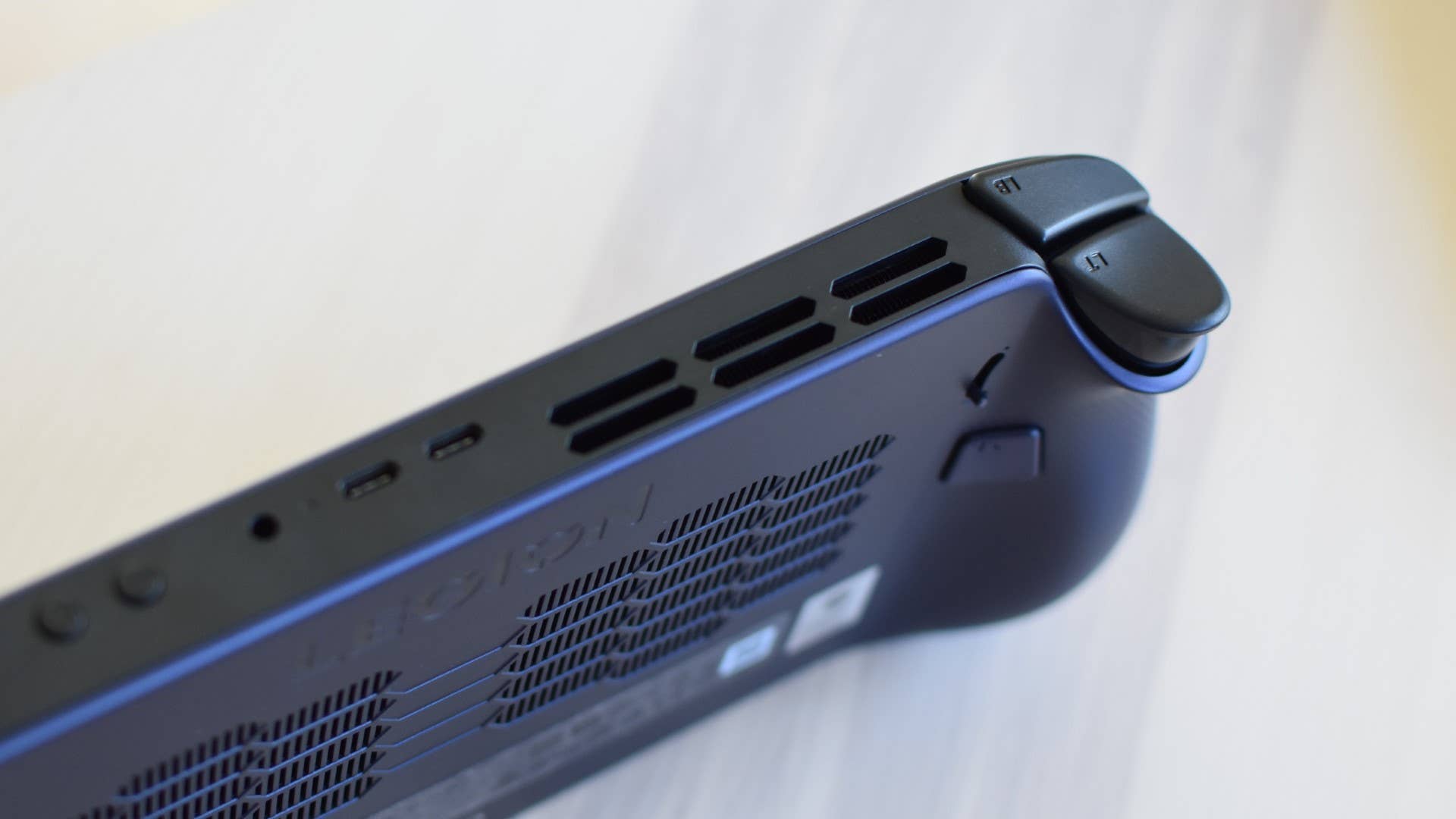
As with framerate performance, there are variances and tradeoffs to consider, especially the bigger, higher-rez display. And, apparently, a fan system designed by Pete Townshend. But a portable PC does need to be, above all else, portable, and minimising the need to stop and recharge is a huge part of that. Put it this way: if you had trio of Legion Go S units and a single Steam Deck OLED, Portal 2 would bleed dry all three Legions one by one before the Deck ran out of juice.
So, yeah, it’s going to take more than magnetic joysticks and a (very, very qualified) performance bump to make the Steam Deck family stop feeling so special among handheld PCs. And yet, in one specific way, they aren’t special anymore, because SteamOS is fully out in the wild now – and the Legion Go S proves that it’s better than the slower, fatter, data-obsessed alternative that non-Valve portables have inherited from desktops. Maybe this device isn’t the best of its kind, but it is an important torchbearer, and overall is decent enough at least avoid undermining the moment.
This review is based on a retail unit provided by the manufacturer.
